This past weekend we were visited by a group of high school students from Niceville, FL. They have come to visit us every year for the past several years to get a taste of what we do, and to incorporate some of our techniques into their own projects and fieldwork.
They divided into three groups. The first group explored the collection for a broad overview of the kind of biodiversity we have in our collection. Of course Bathynomus giganteus, a giant isopod, was a hit.
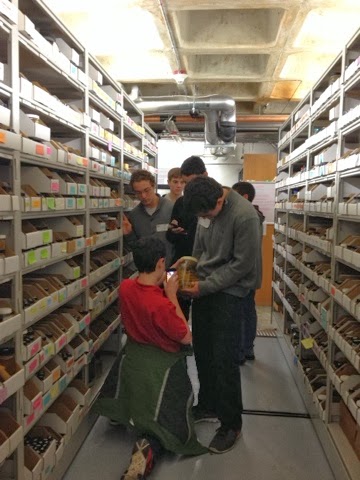
Who could resist a face like this?
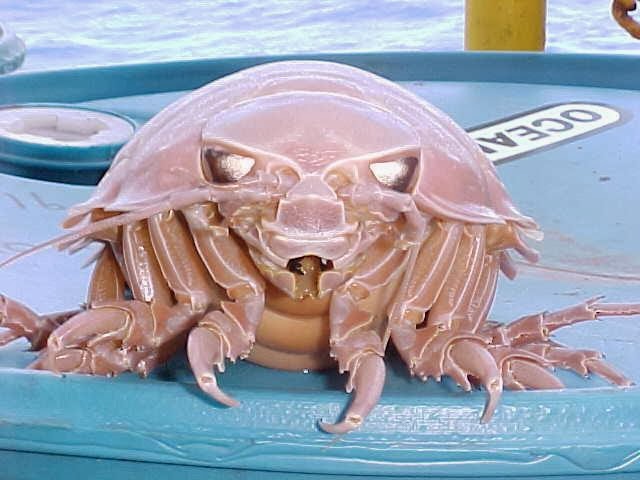
We had several exercises for them down in the collection. Jenna worked with a group of students trying to sort brittle stars. There is a group that has been historically identified as a single species, however genetics and the discerning eye of Tania (a visiting researcher) can find significant differences between several groups within the species. We challenged the high school students to do the same, armed with Tania’s genetic tree and a microscope.
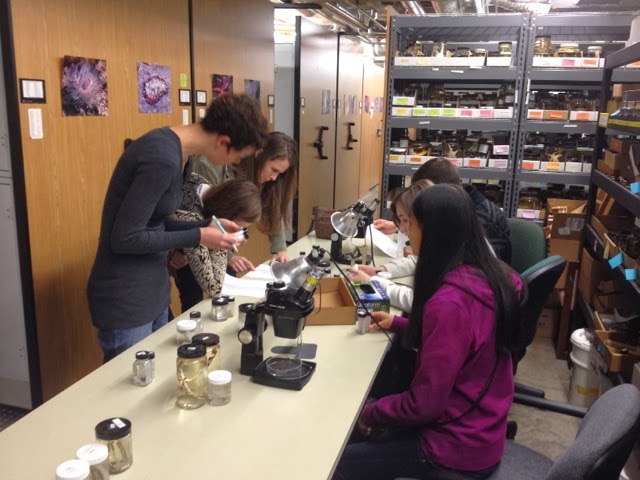
The students also braved the world of tunicates with Ronaldo who is visiting from Brazil. He showed them some nice clear diagrams with taxinomically significant features highlighted. They then looked through the microscope at a prepared specimen to see how tiny and easily confused these features really are.
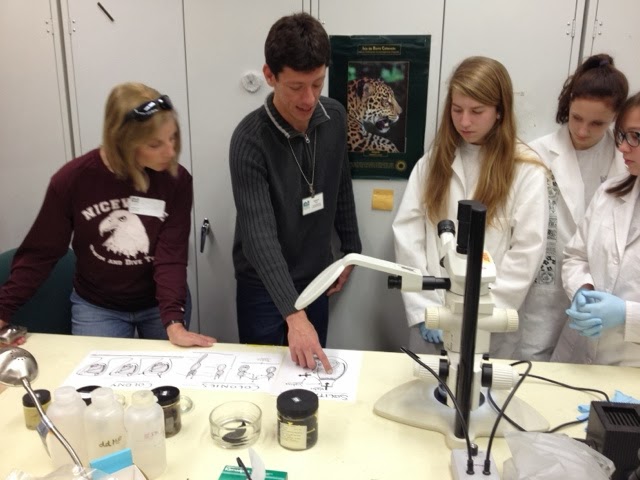
Then they tried their hand at some microscope work of their own and prepared some sea cucumber ossicle slides with guidance from Starmer John and myself. He even brought in the big fancy microscope from our office for the occasion, to demonstrate how ossicles show up under polarized light.
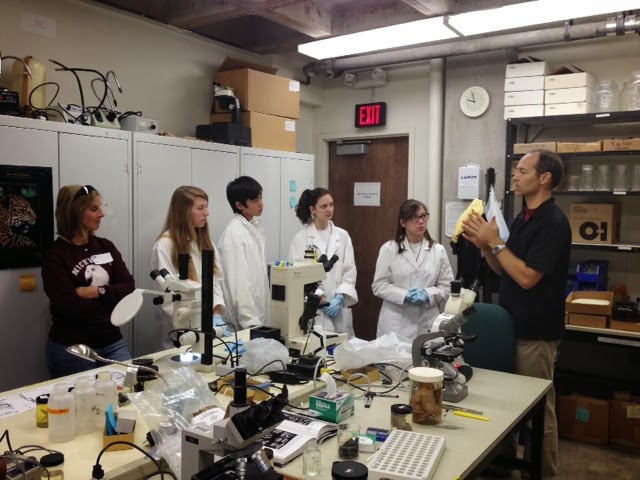
The second station was upstairs in the lab with Nat and Jennifer. After explaining the PCR process and how we use it in our lab, the students all gloved up and prepared solutions for PCRing. Since running the actual PCR is a process that takes several hours in the thermal cycler, Nat and Jennifer ran some pre-loaded gels so they could see the bands of DNA fragments of various lengths.
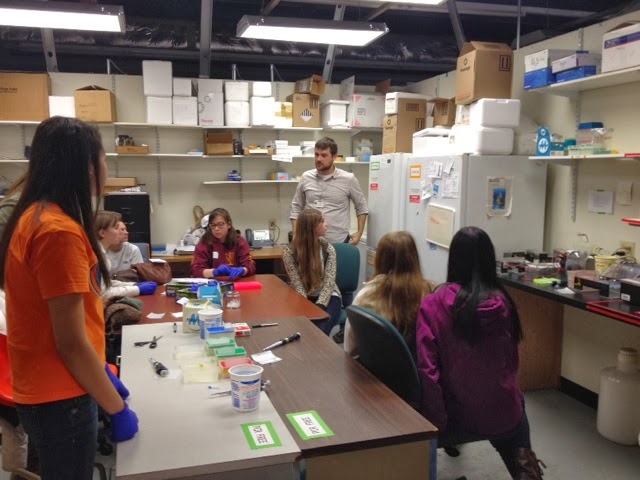
After their stint in the DNA lab, the students headed downstairs to work with François on aligning and cleaning DNA sequences using Geneious. After we send our PCR products out for sequencing, the results we get back still need some hands-on attention before they are ready for prime-time, so the students got a taste of that. François has undoubtedly spend many an hour in front of the computer with color-coded nucleotides dancing before his eyes.
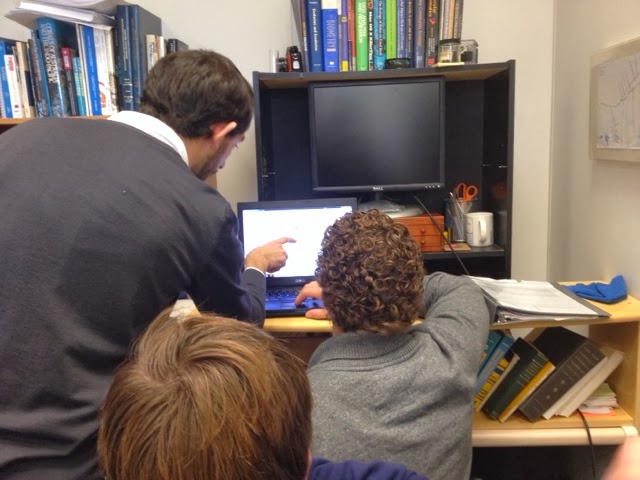
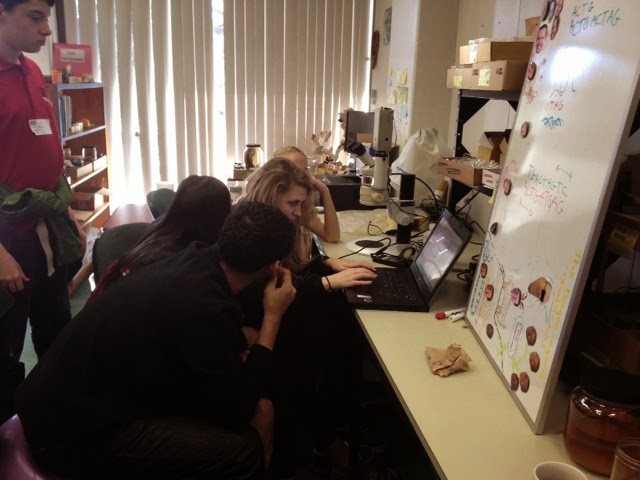
We had a great experience with the group and it’s always fun to share our love of what we do, especially with potential future scientists. In fact, you can never be too young to be engaged in invertebrate zoology…
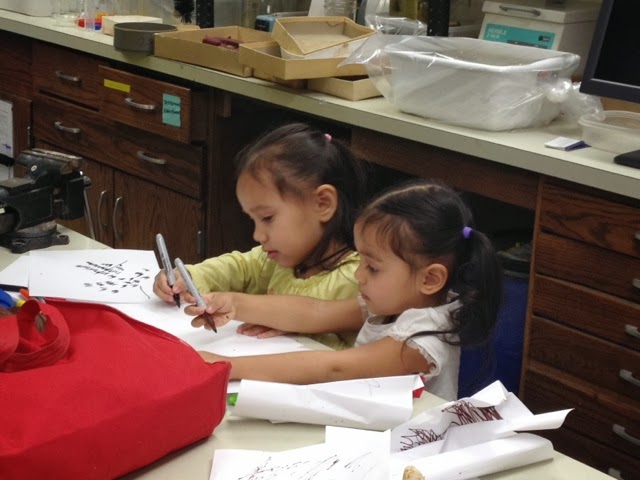
…even if what that means for now is that you’re drawing some octopus and crabs in with your flowers.